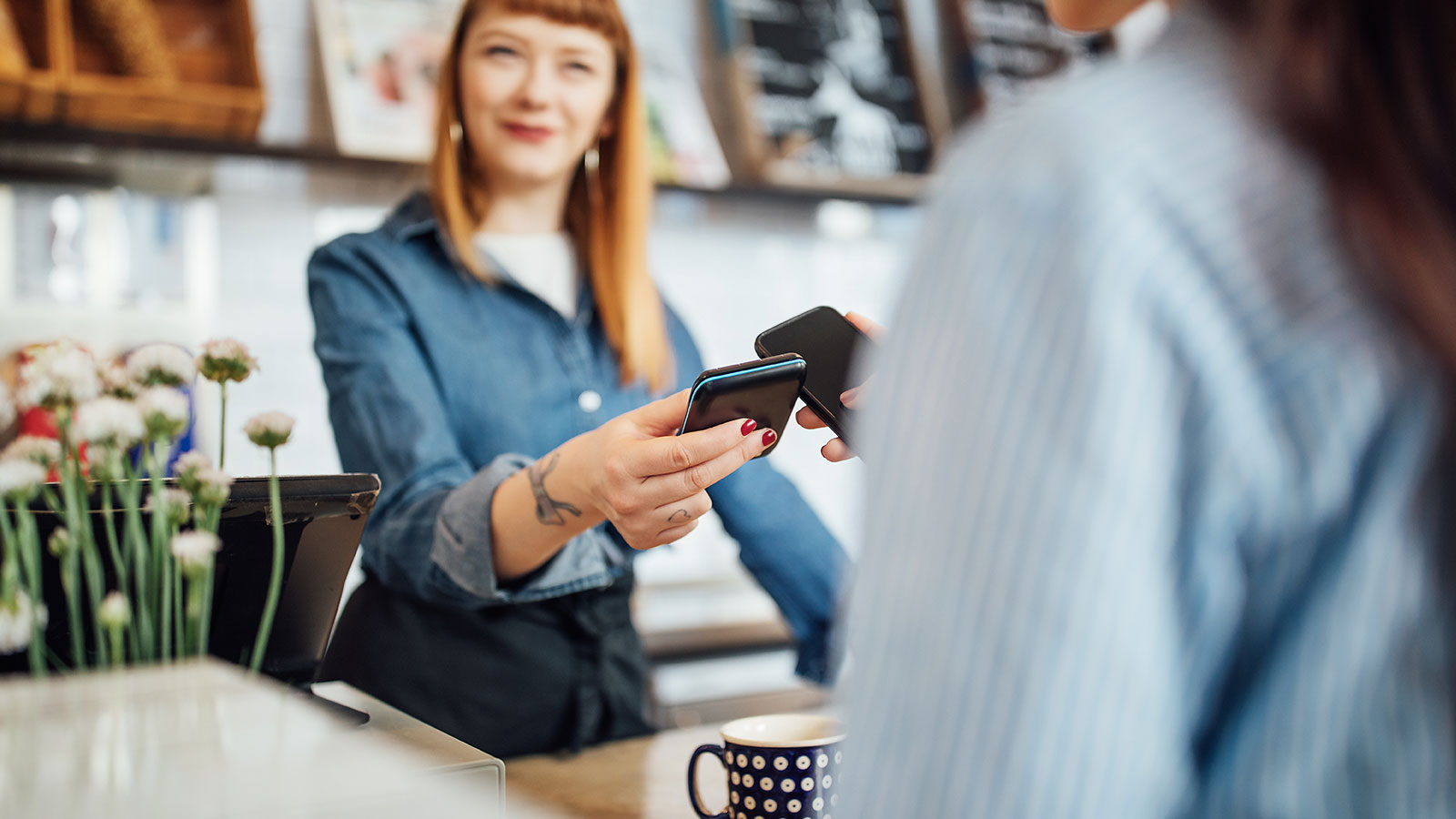#1 Decline in cash and rise of physical cards/ digital payments
Over the last decade there has been a core shift in how consumers are choosing to pay for goods and services. The rise of physical cards, mobile payment methods (e.g. Apple / Google Pay), click and collect, and eCommerce have been steadily gaining share of transactions and reducing the usage of cash. In the UK, cash usage fell to 14% of transaction volume in 2022 (down from 40% in 2016) while debit card transactions are the most common form of payment accounting for 50% of volume. The decline of cash will continue with UK transaction volumes expected to reach 7% in 2032.
Impact on retailers
The shift in the customer’s preferred payment method has a material impact on the cost base of retailers. The decline in cash-based payments should reduce the costs associated with cash management and back office processing. But of course, transaction fees paid by retailers have increased with the usage of cards and mobile payment methods. New payment partners and technologies create the opportunity for retailers to manage these new costs and make a material difference to the bottom line.
#2 Shift from cards to account-to-account payments
Account-to-account (A2A) payments where a transaction is made directly between bank accounts (without network intermediaries e.g. Visa, Mastercard) are also on the rise from a peer-to-peer and business-to-consumer (B2C) perspective. Within the retail payments space, A2A payments are typically linked to recurring charges, loyalty cards or integrated into an app experience are gradually becoming more prevalent. A study by Nuapay found that more than 54% of consumers would be willing to pay via account-to-account payments if the option was available, demonstrating the largely unaddressed opportunity with this payment method.
Impact on retailers
Encouraging customers to pay through account-to-account transfers reduces the fees associated with a typical card transaction. Retailers could utilise rewards to incentivize customers to upload money onto loyalty cards or pay through an in-app experience directly from their bank accounts. At a smaller scale, A2A could be an attractive option for small-to-medium enterprises who are typically less sophisticated from a payments / banking perspective and have substantially lower bargaining power. A2A is relatively immature in retail and does have an impact on services provided by the networks such as liability and protection, but the prize of reducing processing fees could be significant.
#3 Rise of digital wallets
Innovations in near field communication or NFC (which powers short range connectivity between devices) have boosted consumer payments through digital wallets on smartphones and watches. Digital wallets are becoming the preferred payment method for many consumers, growing at a ~20% per annum rate globally, mainly fuelled by the likes of Apple and Google Pay. This trend is expected to continue with digital wallets reaching a 21% share of UK transaction volume in 2026.
Impact for retailers
With rapid adoption of digital wallets, physical cards are less likely to be present with the customer over time. From a loyalty perspective, ensuring the experience is digitised and digital wallet friendly will increase utilisation of a retailers loyalty program. Creating a digital wallet as a retailer, opens an opportunity to build loyalty, add value to the customer, and collect valuable data directly from consumers.
#4 Innovation in provision of credit
Instalment credit associated with retail transactions has grown substantially over the last few years with buy now, pay later being the main driver. Buy now, pay later gives customers the flexibility at checkout to split the cost of a purchase across smaller recurring payments typically without interest. Traditionally, these services were backed by retailers but more and more they are offered by card issuers and specialised buy now, pay later new entrants. Growth in the space will continue with buy now, pay later volume expected to grow 25% per year globally through 2026.
Impact for retailers
Buy now, pay later can be utilised as a tool to increase conversion on purchases of all sizes. It’s often seen as an attractive option for larger ticket purchases and can increase a retailer's average basket size. These point-of-sale financing options are seen as a key differentiator for some consumers when cross-shopping retailers.
#5 Proliferation of payments experience and value-added services
Checkout experiences both online and in-store are becoming more customer-centric. Retailers and quick-serve restaurants are leveraging cashier-less checkouts, often centred on the customers own device, to improve customer turnaround time and reduce labour costs. Friction associated with online checkout are being minimised through the implementation of features like one-click checkout. Frictionless retail stores (no checkouts) popularised by Amazon are expected to grow at a 91% compound annual growth rate through 2027.
Impact on retailers
The payment experience is a critical part of the customer journey. Retailers should be exploring options that reduce the time required to checkout both online and in-store to retain customers. Implementing solutions like frictionless retail stores will have considerable impacts on store footprints and technical infrastructure, requiring adequate planning to remain competitive.
#6 Rise of digital currencies
Digital currencies or cryptocurrencies like Bitcoin, Ethereum and stablecoins have gained traction as an alternative store of value over the last five years. While these alternative currencies have yet to gain a material share of transactions, they do pose a threat to payments providers. Cryptocurrencies represent less than 1% of transactions worldwide but could quadruple in volume by 2029.
Impact on retailers
Large companies from the likes of Adidas to AirBnB have begun to accept digital currencies, primarily through the purchase of e-gift cards. While not offering digital currencies as a form of payment is unlikely to impact consumer decision-making today, it should be considered as wider acceptance is anticipated.
Macro payment trends

Contact us



Constanza Vargas Corbacho
Payments and Financial Services Strategy, Manager, Strategy& UK
Tel: +44 (0)7483 388279







